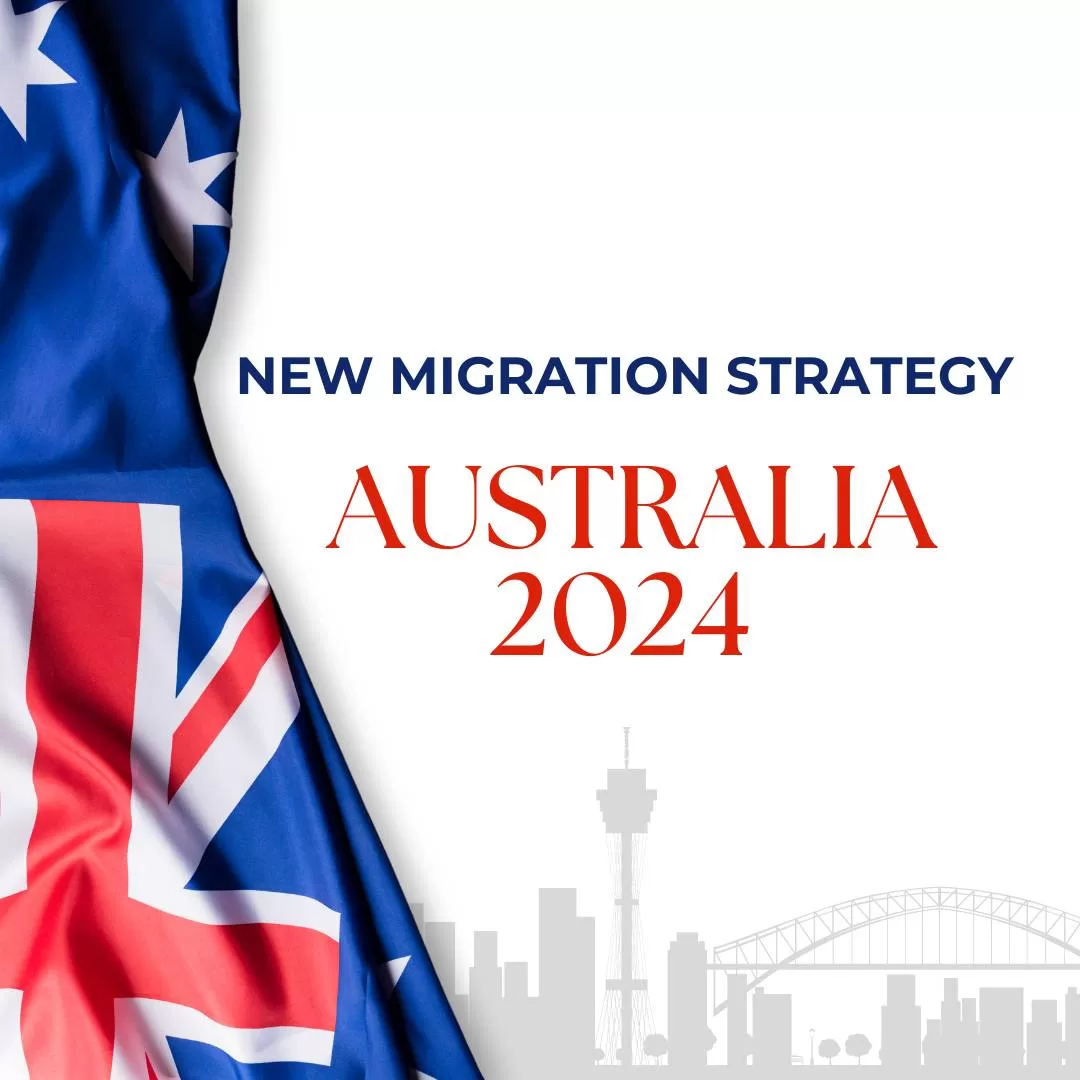Are you an international student who dreams of studying and working in Australia? Well, guess what? The latest migration strategy of Australia in 2024 is bringing some significant changes to study visas. It will undoubtedly affect the flow of international students into the country.
Australia’s migration system was burdened with low-skilled people, or people working below their skill level, and the influx of non-genuine students. So, the Australian government formulated a migration strategy, issued on 11 December 2023, to mend its broken system and address the issues. They have laid out a range of changes to student visas, skills in demand visas, pathways to permanent immigration, and post-study work visa durations in their migration strategy. Several changes have been made, and several more are to be made under this strategy to rebuild the Australian migration system so that it becomes “the nation-building engine it once was.”
The aim of these changes is to cut down the number of visa applications from non-genuine students and to attract the people who will build the skill base of Australia and raise living standards. In this way, the government can ease the permanent residency pathway for genuine students and skilled people. They have made a timeline to implement these changes, some of which will be applied in early 2024.
The Govt. has made many changes in the new strategy, but the changes we are concerned with are the changes made to the student visa and its process and how they will impact the international students seeking study visas for Australia.
Significant Changes to the Student Visa
A number of changes have been made for the student visa and graduate visa applicants. Overseas students now have to meet the stricter requirements set by the Australian Govt. The changes in student visa application, its requirements, and its processing are to be implemented in early 2024. In contrast, changes in Graduate visas are to take place in mid-2024.
Changes in English Language Requirement
Higher scores are needed to meet the English proficiency requirement for international students. These changes are made to improve the educational and workplace experience for student and graduate visa holders in Australia to perform well and integrate well into the community. The changes in these scores for each visa are given below:
| Type of Visa | Previous English Language Requirement scores (IELTS) | Latest English Language Requirement scores (IELTS) |
| Student 500 visa | 5.5 | 6.0 |
| Temporary Graduate visa 485 | 6.0 | 6.5 (with minimum 5.5 score in each section) |
| ELICOS student visa | 4.5 | 5.0 |
The English proficiency test validity window for all Temporary Graduate visa applications decreases from three years to one year. Applicants must provide evidence that they have completed an English language test up to one year before the date of the application.
A New Genuine Student Test
A new Genuine student test for all international students is introduced to replace the previous Genuine Temporary Entrant requirement for student visas. The purpose of this test is to encourage students who are genuinely interested in pursuing their education in Australia, and to discourage those students whose intentions are to work rather than study in Australia.
Changes in minimum amount of funds
The amount of funds required to acquire a student visa for Australia has also been updated. Evidence of savings for international students will need to show proof of $29,710 in savings from May 10, 2024, onwards.
Changes in Visa application fee
- Student and Guardian visa (Subclass 500 & 590) $650 to $710
- Graduate Temporary Subclass 485 $1,730 to $1,895
Significant Changes to the Graduate Visa
changes in the length of TGV
The duration of the graduate visas is set to change midway through 2024. As per these changes, the duration for Bachelor’s and Master’s degrees has been reduced from 3 years to two years. Likewise, the length of the visa for PhD is also reduced by one year. The current duration of PhD visa for international students in Australia is three years. These changes are implemented to discourage long-term temporary visa holders and encourage applicants to opt for visa pathways for permanent residence.
| Previous Rules for Temporary Graduate Visa | New Rules for Temporary Graduate Visa | |
Post study work rights | Long post-study work rights A former student can spend up to 8 years on a Subclass 485 TGV | Shorter-post study work rights Duration of initial TGV will be short No extension for post study work rights, except for applicants studying in a regional area |
Duration of TGV | For Bachelor Degree – 2 years For Master’s Degree – 3 years For Master’s Degree with research work – 3 years PhD – 4 years | For Bachelor Degree – 2 years For Master’s Degree – 2 years For Master’s Degree with research work – 3 years PhD – 3 years |
Eligibility for second TGV | 1–2 years for study in a regional area (based on location) | 1–2 years for study in a regional area (based on location) |
Extension of Post-study work Rights | 2 years for an eligible course of study | No extension for post-study work rights |
Change in Age limit for Graduate Visa
Under the new migration strategy, the age limit for a TGV has also been reduced drastically from fifty years to 35 years. This change will help Australia gather a youthful and dynamic workforce to gear its economy. These changes can cause concern for people aspiring to get an international education later in life. Still, these changes are made to improve the Australian education system and align its migration policies with the world’s evolving needs.
Skill-In-Demand visa
The Australian government introduced the new Skills in Demand visa for international students, replacing their current Temporary Skill Shortage visa (Subclass 482). This visa is proposed to have a fast processing time to keep the workforce moving. It will have a processing time of seven days for students who will successfully gain work experience after completing their studies. This visa provides a more straightforward pathway to permanent residency. If you gain work in a skilled job during your post-study work period, you may be eligible to apply for the new 4-year Skills in Demand visa. This visa has opened a new window for those seeking better job opportunities and permanent residency. Skills in demand visa will provide:
- Guaranteed Pathways to Permanent Residence (Periods of employment with any approved employer will count towards permanent residence)
- More Time to Find a New Job (If an employment relationship with a sponsor ceases, visa holders will have 180 days (up from 60) to find another sponsor.
- Public Register of Sponsors to Assist Mobility (A public register of approved sponsors will be developed to assist migrants wishing to find a new sponsor)
- Three Pathways within Visa (Specialist skill pathway, Core skill pathway)
Getting a visa through these pathways requires meeting certain criteria, including an earning threshold and a specific skill in the list of occupations for these pathways.
Conclusion
Changes under Australia’s new migration strategy aim to rectify the current problems in its migration system, manage its migration levels, improve its education system, and attract youthful and skillful people to their country to boost and strengthen its economy. In this new strategy, a stricter criterion is established to get a study visa for Australia but on the other hand pathway to migration has been made easy. Suppose you are an aspiring student looking forward to studying in Australia. In that case, you must know the current changes to prepare to meet the set requirements. Some changes are in place, and others are on their way to implementation, so be aware. If you are a genuine student looking to study, then worry no more, a skilled study visa consultant and a migration agent can help you with the process. In the wake of this new strategy, hiring a skilled migration agent can help you meet the requirements and increase your chances of success.



